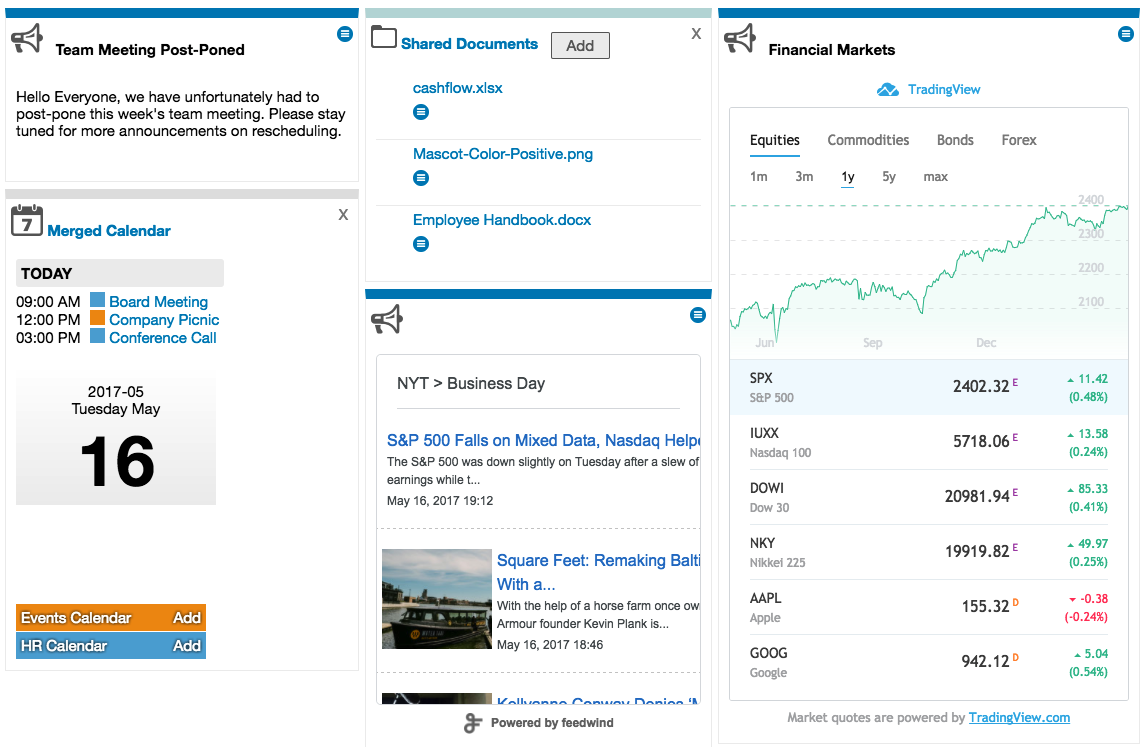Last week we wrote about the most important feature of portal software; its relevance to the user. This week, we’ll take a look at Noodle intranet best practices for creating and managing Widgets so you can make your intranet relevant to you at every turn. But first, what are Widgets?
What are Widgets?
As you may know, Widgets provide quick snapshots of information. They can hold either static content, such as announcements, or dynamic content that is pulled from other applications. Many businesses use static Widgets to share pertinent information to employees, following a traditional top-down communication structure. Dynamic Widgets can be used to pull in the latest news via rss, social media feeds or from various html5, javascript and iframe applications. They can also pull in highly relevant information from Noodle applications, such as calendars, or shared documents.

Which Widgets should I create on my home page?
Two strategies are commonly employed in setting up your intranet home page.
Top-Down Communication with restricted permissions and static Widgets
Traditionally, intranets were used as a top-down communication tool, and this is still a common strategy today. Although intranets today can do much more, you can still accomplish this by pushing important information to employees with static Widgets and by restricting permission controls. This strategy alone is useful for businesses that want the intranet to function as a static knowledge base. However, this can hinder intranet engagement, if that is the goal of your intranet.
Horizontal Communication with loose restrictions and dynamic Widgets
With the advent of social media and Web 2.0, the intranet evolved to include a social aspect. This enabled employees at every level to participate in content creation. For companies with a more flat organizational structure or culture, looser permission controls and dynamic content can open up the lines of communication and increase engagement. Dynamic content requires less maintenance and content creation by pulling from readily available sources, such as rss feeds, or popular applications. By pulling from applications, you can ensure your Widgets are directly relevant to individuals or groups.
So, what are the best practices for selecting Widgets for your home page?
Noodle Intranet Best Practices For Managing Widgets
The best practice for managing Widgets is to base them on your business objectives and what benefits you are looking to get out of your intranet. Keep in mind the pros and cons of each of the above strategies. Remember, relevance is key! Most businesses can benefit from a hybrid combination of static and dynamic content. Static Widgets keeps employees informed if the information is relevant, however it’s unlikely that all your content is relevant for all your users or groups. Dynamic content will keep your content updated, however it may pull less relevant content, depending on the source. Relevant Noodle applications, such as a merged calendar or shared documents can provide functionality, and increase efficiency and engagement. On the other hand, rss news feeds could distract from day to day operations if the feed is not relevant.
Keep in mind that there are headline pages for each section, which can hold Widgets that are more relevant to those sections. The homepage should contain high-level content that is relevant across the organization. For example, the merged calendar can show a birds eye view of different departmental calendars, and include an organization-wide calendar.
For more information on Noodle Intranet best practices, or questions on managing Widgets, contact our Noodle Advisors.